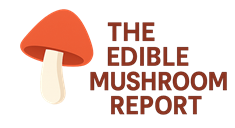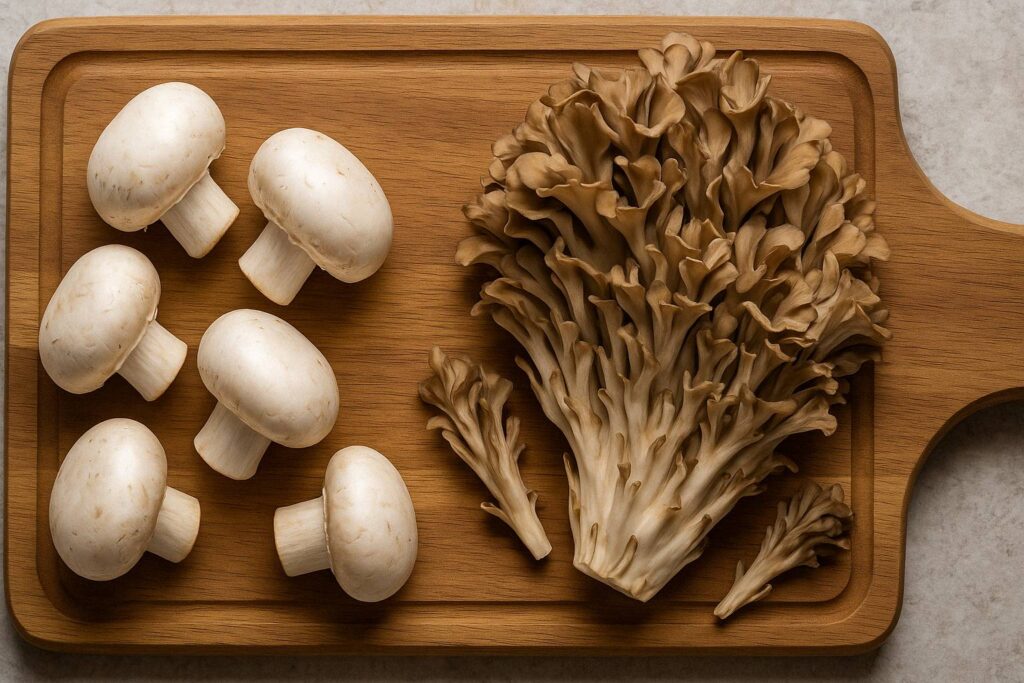In grocery aisles and restaurant kitchens across North America, a quiet but flavorful revolution is taking place. Once dominated by the humble white button mushroom, the edible mushroom market is now seeing a surge in demand for gourmet and specialty varieties—particularly maitake, shiitake, and oyster.
This shift isn’t just about taste. It reflects deeper changes in consumer values: a craving for culinary exploration, a growing appreciation for whole-food nutrition, and a willingness to spend more for a richer eating experience.
From Familiar to Flavorful
For decades, white button mushrooms held court as the default choice for most shoppers—affordable, accessible, and versatile. But in recent years, consumer curiosity has expanded. Shoppers who once tossed a handful of white buttons into a stir-fry are now reaching for mushrooms they can roast, sauté, or even feature as a main dish.
Maitake, also known as Hen of the Woods, is leading this gourmet movement. Its layered, feathery structure and woodsy umami profile make it a favorite among chefs and adventurous home cooks alike. Shiitake and oyster mushrooms are close behind, increasingly featured in meal kits, online recipes, and pre-packaged “chef’s blends” in retail stores.
Health-Driven, But Not Just for Wellness
Consumers are not just buying gourmet mushrooms because they’re trendy. They’re buying them because they align with multiple modern priorities:
- Flavor: Gourmet mushrooms offer bold, meaty textures and complex taste profiles, elevating plant-based meals without sacrificing depth.
- Nutrition: Rich in antioxidants, fiber, and micronutrients, these varieties are marketed not just as ingredients—but as superfoods.
- Sustainability: Specialty mushrooms are often grown locally, organically, or using low-impact methods—values that resonate with eco-conscious buyers.
According to recent consumer data, interest in gourmet mushrooms spikes during wellness season (Q1) and again during the holidays (Q4), when earthy flavors and unique dishes are especially sought after. But increasingly, demand is year-round.
Who’s Driving the Demand?
Millennials and Gen Z are at the forefront of this shift. They’re more likely than older generations to:
- Follow food influencers and cooking trends on social platforms
- Embrace multicultural cuisines where gourmet mushrooms are center stage
- Try plant-based or flexitarian diets where mushrooms fill the “umami gap” left by meat
Meanwhile, Gen X and Boomers are warming to gourmet mushrooms more gradually—often by incorporating them into familiar dishes like pastas, risottos, and holiday stuffing.
What This Means for Retailers and Growers
For retailers, the opportunity is clear: make room for more than just white and cremini. Pre-packaged blends, recipe-ready kits, and clear flavor labeling (“earthy,” “meaty,” “savory”) can help newer consumers feel confident experimenting.
For growers, the rise of gourmet varieties means there’s real value in diversification. Maitake and oyster mushrooms can command a price premium, especially when paired with local, organic, or sustainability-forward messaging.
Insight to Watch:
Online searches for “how to cook maitake” are up over 20% year-over-year. Gourmet is no longer niche—it’s becoming the new norm.
Final Thought
As North American palates continue to evolve, so too will the edible mushroom aisle. The age of white button dominance isn’t over—but it’s being deliciously challenged by a new cast of flavorful, textured, and nutrient-packed fungi.
For brands and growers who are paying attention, this isn’t a passing trend. It’s a chance to redefine the mushroom market, one gourmet bite at a time.

